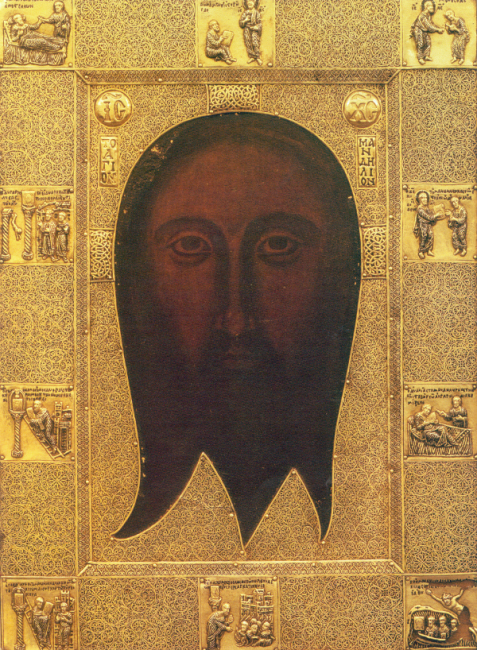The Holy Face
The Holy Face, more commonly known to in Genoa as the "Santo Mandillo" (a local dialect term meaning a handkerchief and deriving from the Greek mandylion), is considered to be the oldest portrait of Christ. According to an ancient legend from the 3rd century A.D., King Abgar of Edessa in Armenia, sick with leprosy and having heard of the healing powers of Jesus who preached in Palestine, sent the artist Ananias to paint him a portrait of Jesus's face. When the artist proved unable to portray the Messiah, Jesus took the canvas and rested it on his face soaked in sweat, thereby leaving his image printed on it. Upon returning to his homeland, Ananias touched the King with the shroud and it miraculously healed him. The shrouded was henceforth worshipped as a sacred effigy.
In 639, Edessa was occupied by the Arabs, who offered the relic to Byzantium in exchange for money and prisoners. In 1362, the relic left Byzantium for Genoa with Leonardo Montaldo, who had received it as a gift from the Byzantine Emperor John V Palaiologos. Montaldo donated the "Holy Face of Edessa" to the monastery of the Armenian Basilians (from 1650 onward, the Barnabites) where it is still preserved and venerated today. Until the middle of the last century, the Genoese flocked in their thousands to the feast of "Saint Bertommé di Erminni", since the "Holy Face" was believed to have the power to cast away "malefiziou" (evil) and protect Genoa from disaster.
The relic is brought out for worship by the faithful permanently, in the opening times of the church.
The icon is kept in a 14th-century silver-gilt frame known as the "paleologa", a work of early Byzantine goldsmithry that also features ten embossed scenes depicting the origin of the sacred effigy.

